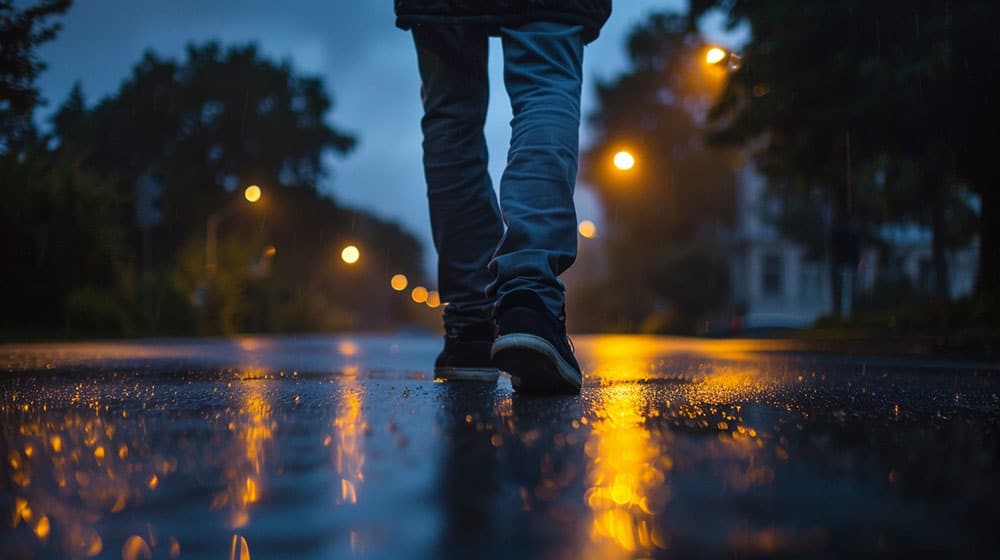How do you prepare to walk safely at night? This vital question concerns many, and our guide offers the answers. We’ll show you how to stay visible and alert, select the safest routes, and use personal safety tools effectively. Get ready for concrete strategies that promise a safer journey under the stars—no fluff, just essential safety know-how.
Key Takeaways
It is crucial to wear light-colored, reflective clothing for visibility and to select well-lit, populated paths for nighttime walks, avoiding dark, secluded areas.
Personal safety devices like whistles, flashlights, or self-defense tools like pepper spray should be carried, and walking paths should be planned ahead, including choosing landmarks for navigation and safety.
To stay alert, avoid distractions, share your walking route with a trusted contact, consider self-defense training, and take additional precautions in scenarios that pose greater risks.
Essential Preparations for Nighttime Strolls
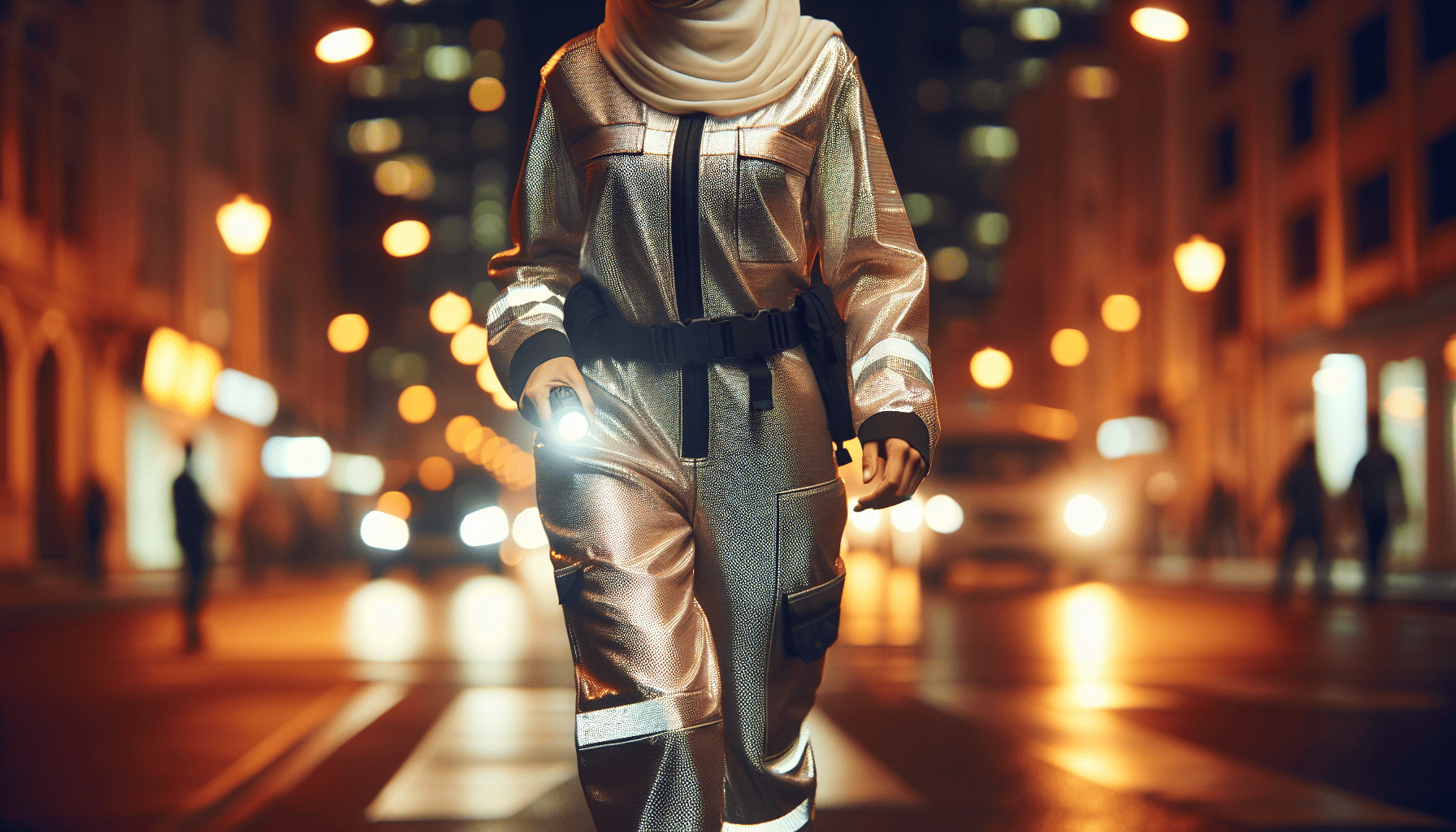
Before embarking on your nocturnal journey, it’s crucial to gear up properly. Selecting the right walking clothes, for instance, can significantly affect your safety. Dark, hard-to-see garments can make you less visible to drivers and other walkers, increasing the risk of accidents. Therefore, opt for light-colored, reflective clothing that stands out against the night.
Besides dressing appropriately, one must also stay alert and trust one’s instincts. If something doesn’t feel right, it probably isn’t. Trusting one’s gut can help you avoid potential dangers such as reckless drivers, aggressive animals, or suspicious people.
Safety always comes first, and it’s better to be safe than sorry. Taking the necessary safety precautions is essential to ensure your well-being.
Selecting Safe and Illuminated Paths
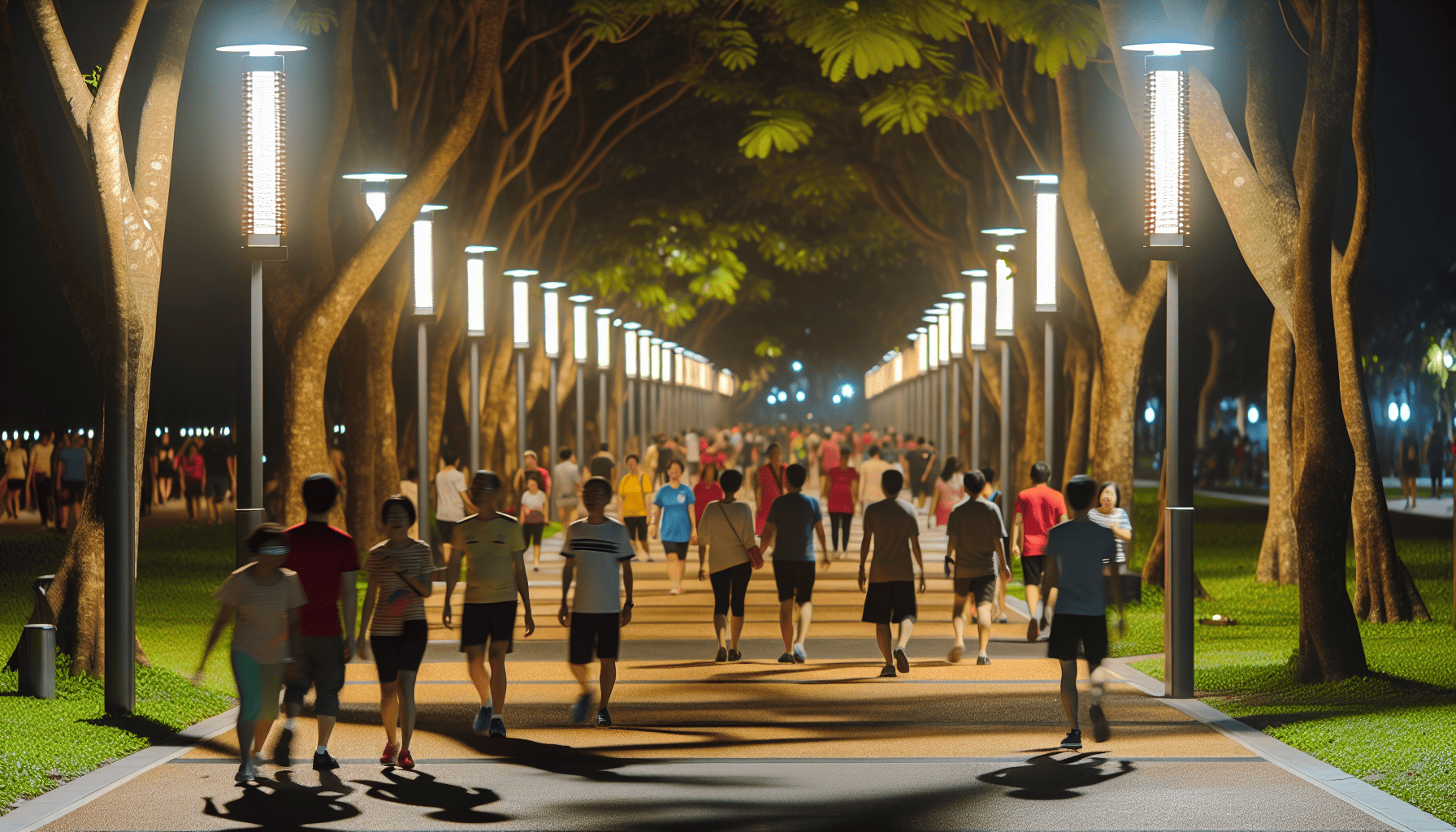
Walking safely at night goes beyond just wearing the right clothes and staying alert. It also involves choosing well-lit paths for your journey. Well-lit areas improve your visibility and dissuade potential wrongdoers from approaching you.
Think of bustling outdoor shopping centers, busy streets with pedestrian traffic, and open 24-hour businesses. These places usually have good lighting and a constant presence of people, making them safer options for nighttime walking.
Conversely, avoid dark alleys, unlit parking lots, dark patches, and dark areas with thick shrubbery where potential attackers could hide.
Mapping Out Your Journey
A well-planned route is a safer route. Knowing where you’re going prevents you from getting lost and allows you to walk more confidently. When mapping your journey, prioritize sidewalks and paths over high-speed roads. Look for areas known for their safe drivers and crime-free neighborhood characteristics.
Don’t hesitate to seek guidance from law enforcement officers or traffic engineers in complex scenarios. They have the expertise to help you identify the safest routes. Always remember to plan an alternate route for any unexpected situations while walking at night.
Identifying Well-Lit Landmarks
Well-lit landmarks can serve as your guiding stars during a nighttime walk. They help you stay on the right path and provide safe spots where you can take a breather if needed. Some examples of well-lit landmarks include:
Fast food restaurants
Large retail stores
Gas stations
Public buildings like libraries and community centers
These landmarks can aid your navigation and provide security during your nighttime walk.
Moreover, parks with evening sports activities or events and well-lit public areas such as squares or plazas can also contribute to safer walking routes. Including these in your walking route can enhance your safety and make your journey more enjoyable.
Personal Safety Tools for Every Walker
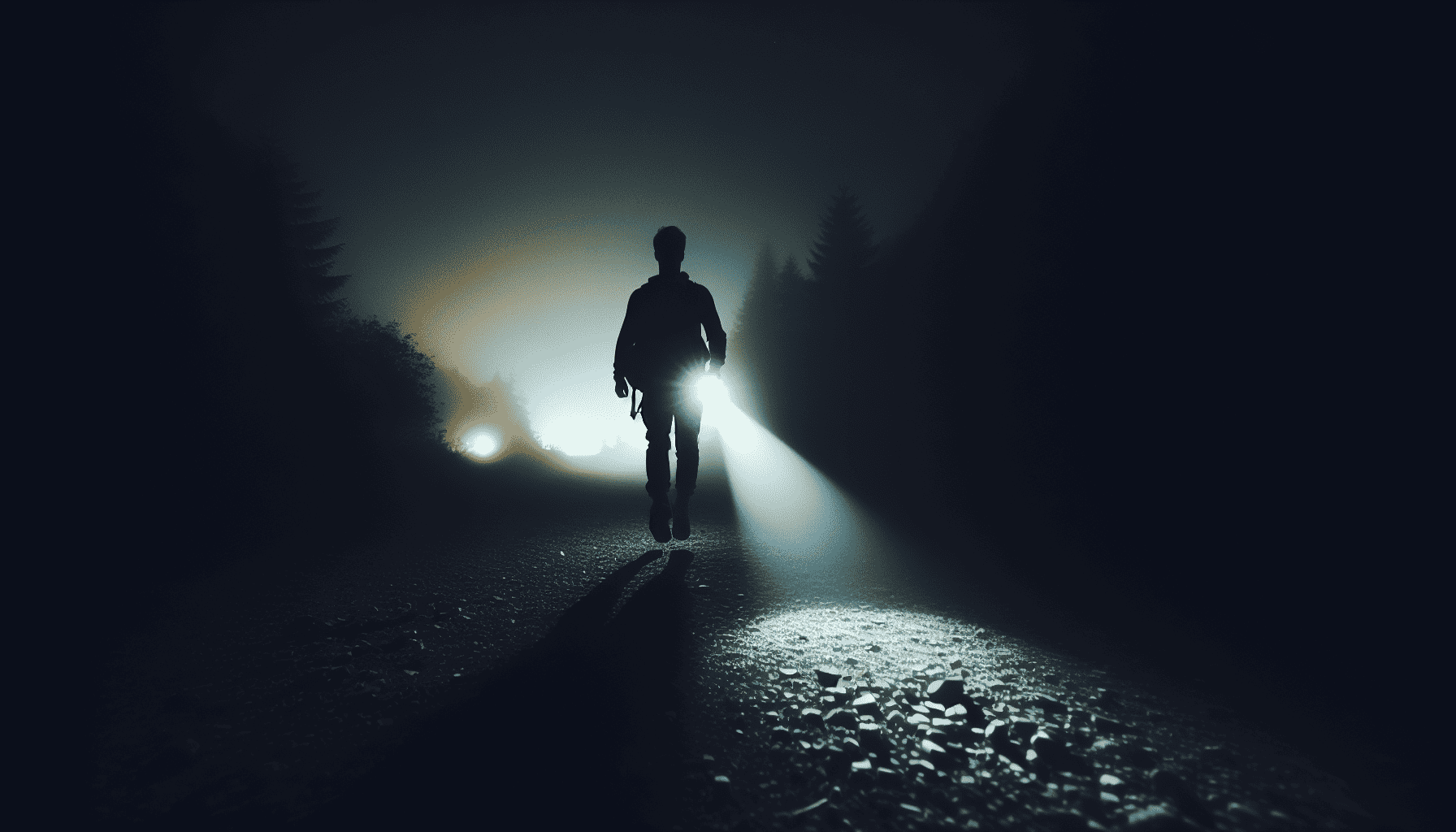
While walking confidently and choosing safe paths can enhance your safety, it’s also wise to equip yourself with personal safety tools. These tools range from non-violent deterrents like a whistle or flashlight to self-defense devices like pepper spray or stun guns.
Carrying a self-defense device is a common concern for many, especially women. These devices, such as a keychain panic alarm, can emit a siren that can be heard up to 1/2 a mile, attracting attention and potentially scaring off attackers. Furthermore, having your car keys ready can ensure quick access to safety and may even be used for self-defense if needed.
Portable Lighting Devices
A portable lighting device, like a lightweight flashlight or headlamp, is vital for maintaining visibility and personal safety while walking at night. These devices light your path, making you visible to others, including oncoming traffic. They can also be used in conjunction with reflective gear for maximum visibility.
Moreover, a flashlight can double as a self-defense tool, providing distance between you and an attacker. It allows for visual identification, is crucial for police reports, and can disorient an attacker through flash blindness or strobe modes explicitly designed for self-defense, offering a chance to escape.
Dressing Smartly for Visibility and Mobility
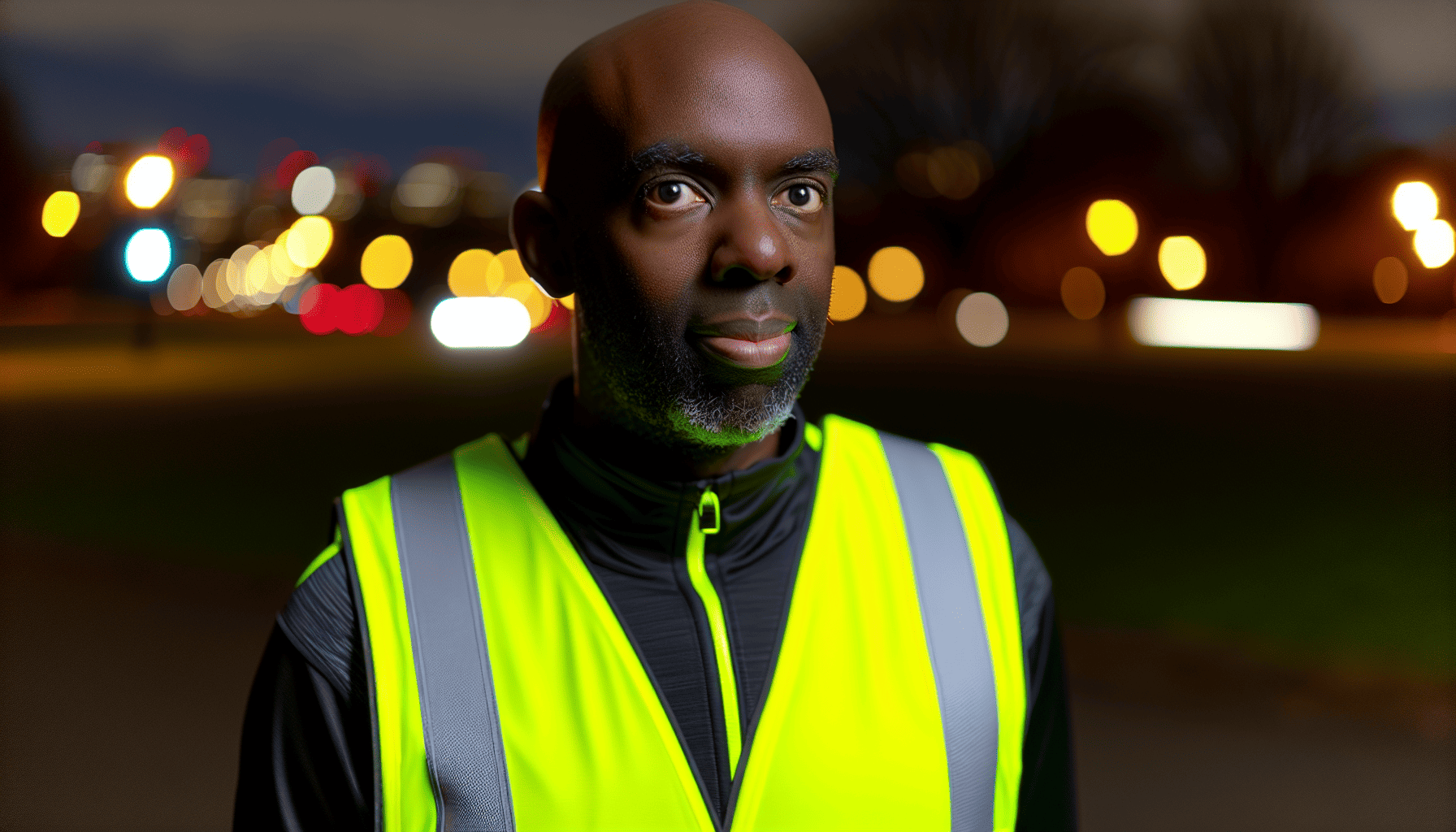
Reflective clothing is a game-changer when it comes to walking safely at night. Here are some benefits of wearing reflective gear:
Clothing with reflective stripes on the front, back, and sides significantly increases a pedestrian’s visibility at night.
Reflective gear turns walkers into ‘mobile lighthouses,’ catching the human eye’s attraction to moving light.
When combined with portable lighting devices, reflective gear enhances visibility even further.
Apart from visibility, comfort is another critical aspect to consider. Reflective gear is typically designed using lightweight, breathable materials that boost a walker’s confidence and positively influence their performance. So, when choosing your walking attire, remember to balance visibility and comfort.
Reflective Gear Essentials
Reflective gear comes in numerous forms. To ensure safety, it is important to wear reflective clothing options like jackets, pants, shorts, and shoes designed with reflective strips or patches. However, if you don’t want to change your attire, consider reflective accessories like bands, belts, hats, gloves, and shoe clips.
Some popular choices for enhancing visibility include:
Wearable reflective slap bands on the wrist or ankle
Reflective vests that provide storage for essentials
Adding reflective tape to existing clothing and equipment
These options combine visibility with convenience and comfort, ensuring you stay safe and visible at night.
Comfortable Footwear Choices
Your choice of footwear is equally essential for a comfortable and safe nighttime walk. Here are some features to look for in shoes:
Wide toe box
Snug fit around the ankle and heel
Styles that prevent blisters and bunions
Balance of snug fit, cushioning, and breathability
If you’re walking on concrete or uneven terrain, shoes with the following features can help protect your joints and enhance walking safety at night:
Excellent cushioning
Good shock absorption
Dynamic flexing soles
Gel cushioning
Arch support (for those with overpronation or plantar fasciitis)
Communication as a Safety Net
Staying connected during your nighttime walk is an additional safety measure. Here are some ways to stay connected and ensure your safety:
Carry a phone to have a lifeline in case of an emergency.
Use safety apps that allow for discreet alerts to authorities.
Inform someone about your plans before a night walk to add to personal reassurance and safety.
If you’re walking alone at night, phoning a trusted contact can help you stay calm and ensure others know you’re safe. If no personal contact is available, mental health helplines like Samaritans can provide a comforting presence.
Informing Trusted Contacts
Before stepping out the door, it’s crucial to let a trusted person know where you’re going and when to expect you back. This simple measure can go a long way in ensuring your safety. Share your planned walking route with trustworthy people so they know your whereabouts throughout your journey.
In addition to personal safety from potential threats, informing trusted contacts can be critical in case of an emergency, such as accidental injuries. So, if you’re planning a night walk, give a heads-up to a friend or family member.
Using Your Mobile Phone Wisely
Your mobile phone, also known as a cell phone, can be a powerful tool for safety during nighttime walks, but only if used wisely. While checking texts or listening to music during your walk is tempting, these activities can distract you and prevent you from being fully aware of your surroundings.
If you need to check your phone, follow these steps:
Hold it up higher within your visual field.
Look up every few seconds to maintain awareness of potential risks.
Step out of the path to use your phone to concentrate on your safety and not obstruct others entirely.
Avoiding Distractions and Staying Alert
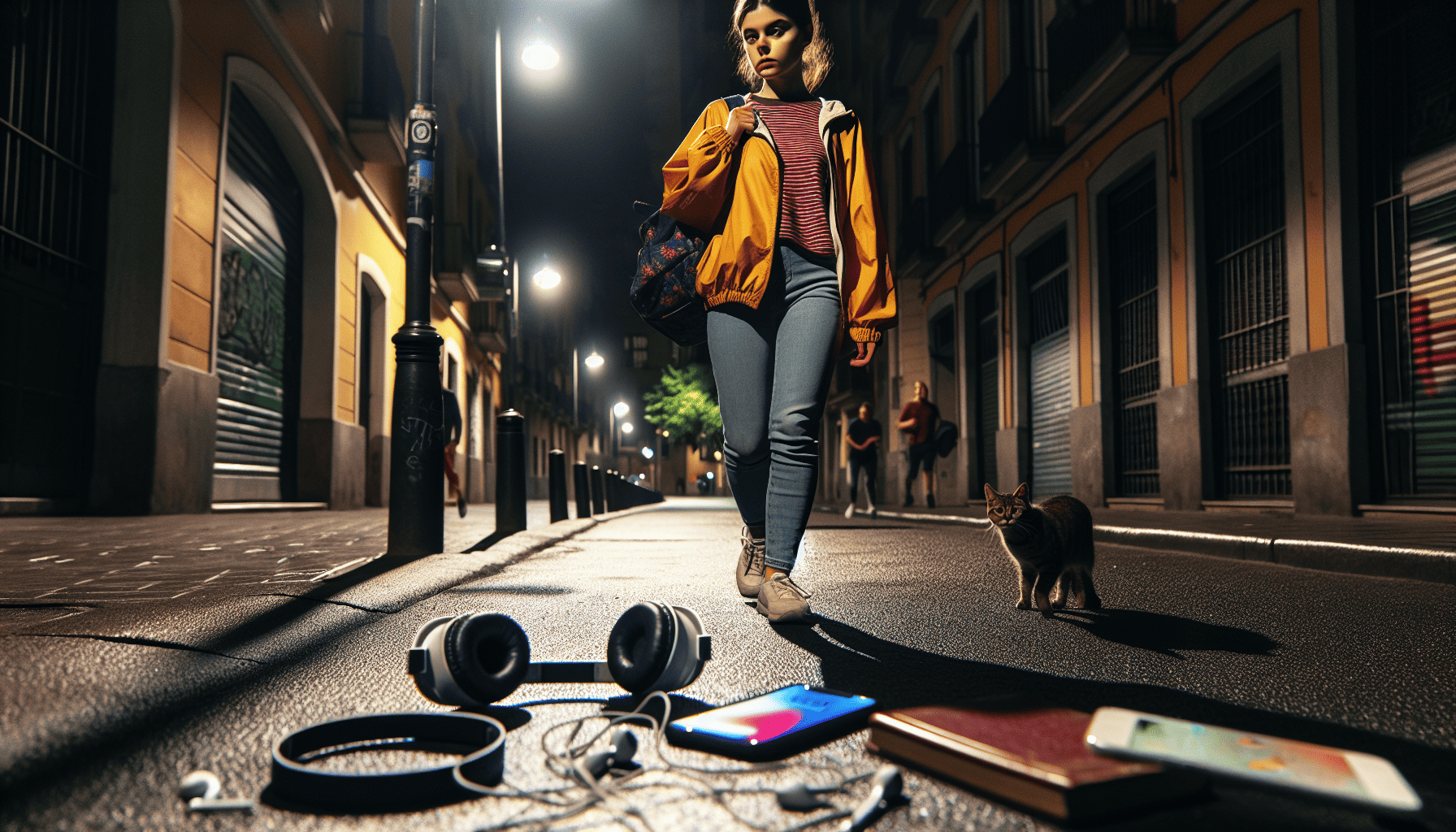
Staying alert is perhaps the most crucial aspect of walking safely at night. This means avoiding wearing headphones, which may prevent you from hearing approaching vehicles, people, or other threats. Keeping your senses sharp and trusting your instincts can help you anticipate and avoid potential dangers.
If you perceive a threat or feel uneasy, trust your instincts, alter your path, or postpone your walk. Remember, your safety is paramount, and it’s always better to walk confidently and be overcautious than to risk your well-being.
Empowerment Through Self-Defense Knowledge
Self-defense classes can be a powerful tool for enhancing one’s confidence and safety during nighttime walks. These classes equip you with the skills to disable an attacker and get to safety, boosting your confidence and helping you project an alert presence that could potentially dissuade attackers.
These classes teach you physical skills and sharpen your mental reflexes, giving you a fighter’s instinct crucial for responding to attacks. Regular practice allows you to naturally react to threats, increasing your chances of successfully defending yourself.
Moreover, self-defense instruction encourages assertiveness and drawing attention to oneself in uncomfortable situations, which can deter potential attackers. So, if you’re a regular nighttime walker, consider enrolling in a self-defense class. It could make a world of difference to your safety and confidence.
Navigating Public Spaces at Night
Public spaces like parking lots and elevators can pose additional risks during nighttime walks. Therefore, it’s crucial to know how to navigate these areas safely. For instance, upon reaching your vehicle in a parking lot, enter and lock your car doors promptly to prevent potential assaults and thefts.
When using elevators, remember to:
Verify the elevator floor is aligned with the corridor before entering to avoid trips or falls.
Pay attention to your surroundings and avoid distractions.
Follow any posted safety guidelines or instructions.
Report any maintenance or safety concerns to the appropriate authorities.
Remember, safety is not just about fending off potential attackers but also about avoiding accidents that result from a lack of attention to your surroundings.
Taking Extra Precautions in Specific Scenarios
Sometimes, extra precautions are called for. For instance, if you regularly walk home late at night after work, it’s advisable to avoid going alone and instead try to be accompanied by a friend. Not only does this provide companionship, but it also adds an extra layer of safety to your walk.
Remember, precautions for enhancing night safety may differ based on unique individual circumstances. So, constantly assess your situation and adjust your safety measures accordingly. There’s no one-size-fits-all solution for safety, so stay flexible and adapt as needed.
Encouraging Community Safety Initiatives
Community safety initiatives can play a significant role in enhancing nighttime walking safety. Some examples of these initiatives include:
Spreading safety tips and information through businesses and organizations
Offering safety devices, such as reflective gear or personal alarms, to community members
Hosting events like National Night Out, which promotes police-community partnerships and neighborhood camaraderie
These initiatives can help create a safer environment for everyone in the community.
Similarly, businesses in the nightlife sector can contribute by employing ID scanning software to prevent underage and repeat offenders from entering their venues. They can also adopt contactless payment options, metal detectors, and camera systems to enhance security and reduce robbery risks.
Summary
In conclusion, walking safely at night is a multi-faceted endeavor that requires preparation, alertness, and the right tools and attire. Every step contributes to a safer nighttime walk, from mapping out well-lit paths and wearing reflective gear to staying connected with trusted contacts and learning self-defense. Remember, your safety is in your hands, and with the proper precautions, you can confidently navigate the night. Stay safe, stay alert, and enjoy your walk under the stars.
Frequently Asked Questions
How do you stay safe when walking at night?
To stay safe at night, avoid walking alone, don’t use headphones, stick to well-lighted areas, avoid shortcuts, and stay near the curb to reduce risk. Be cautious around large bushes or doorways as well.
Is it safe to walk around at night?
When walking at night, it is safer to stick to busy, well-lit areas to minimize the risks of potential danger. Stick to familiar places where you are known.
Is it healthy to go for a walk at night?
Yes, it is healthy to go for a walk at night. It can help burn more calories, prevent overeating, and even improve sleep quality. Going for a walk before bed has been shown to help with falling asleep faster and having better sleep quality.
What type of clothing is best for walking at night?
When walking at night, it’s best to wear light-colored, reflective clothing to increase visibility and make yourself more noticeable to drivers and pedestrians.
What precautions should I take in specific situations during nighttime walks?
Consider walking with a friend if you often walk home late at night to enhance your safety.

